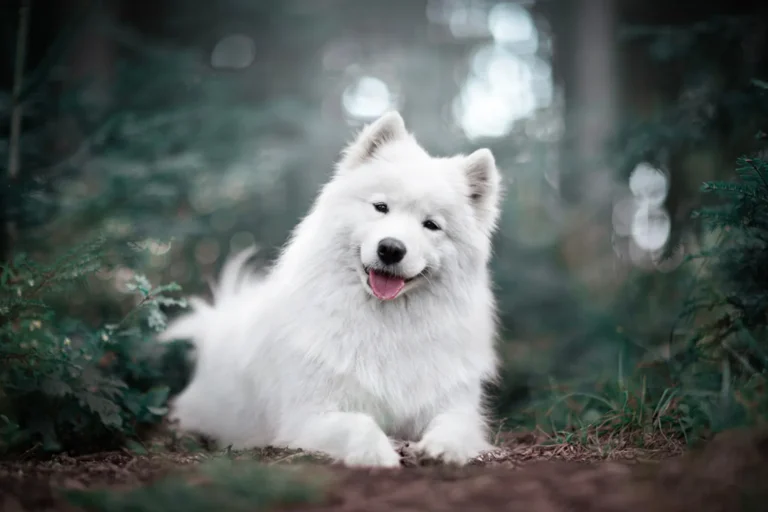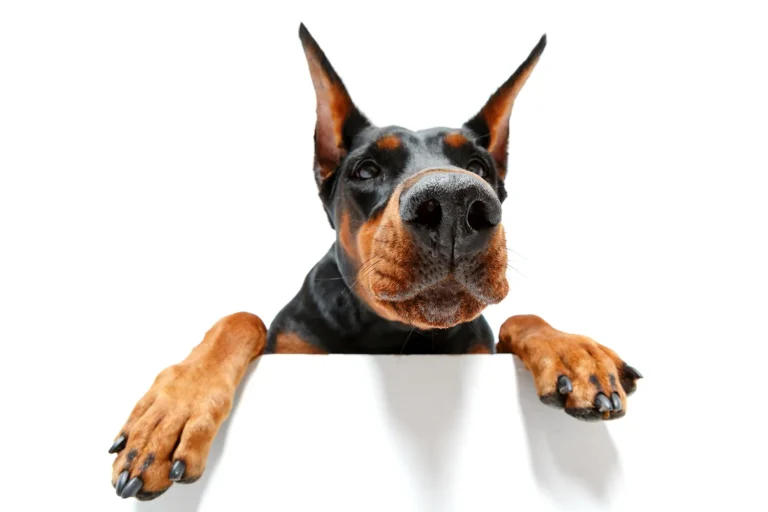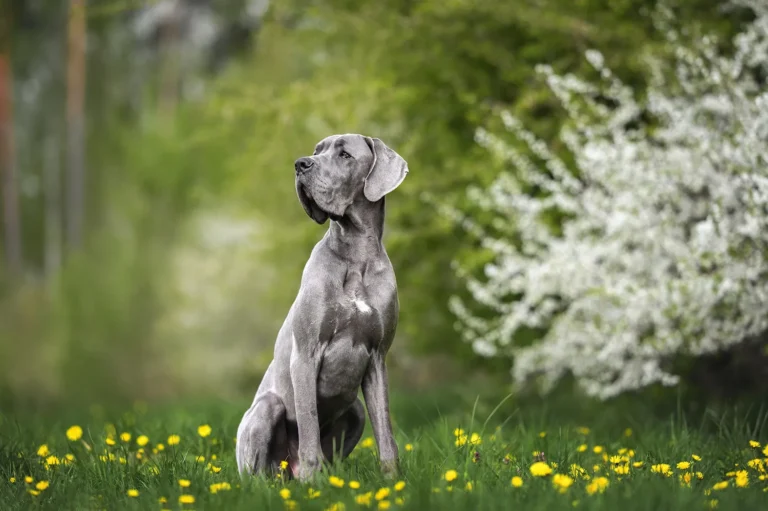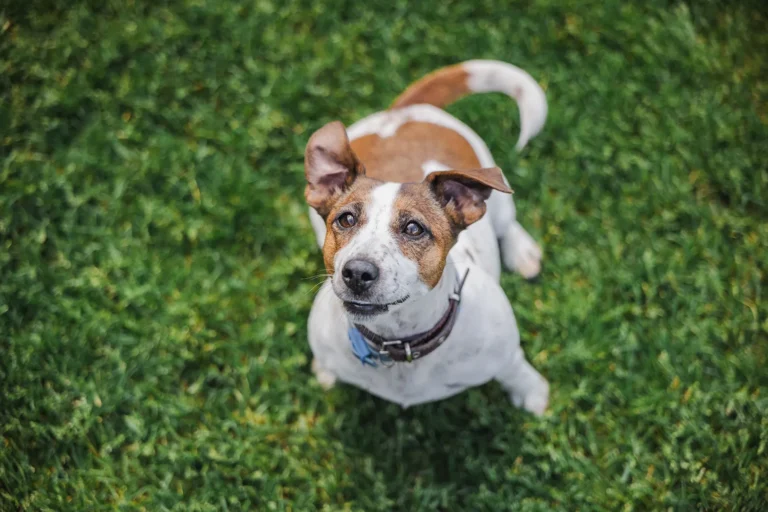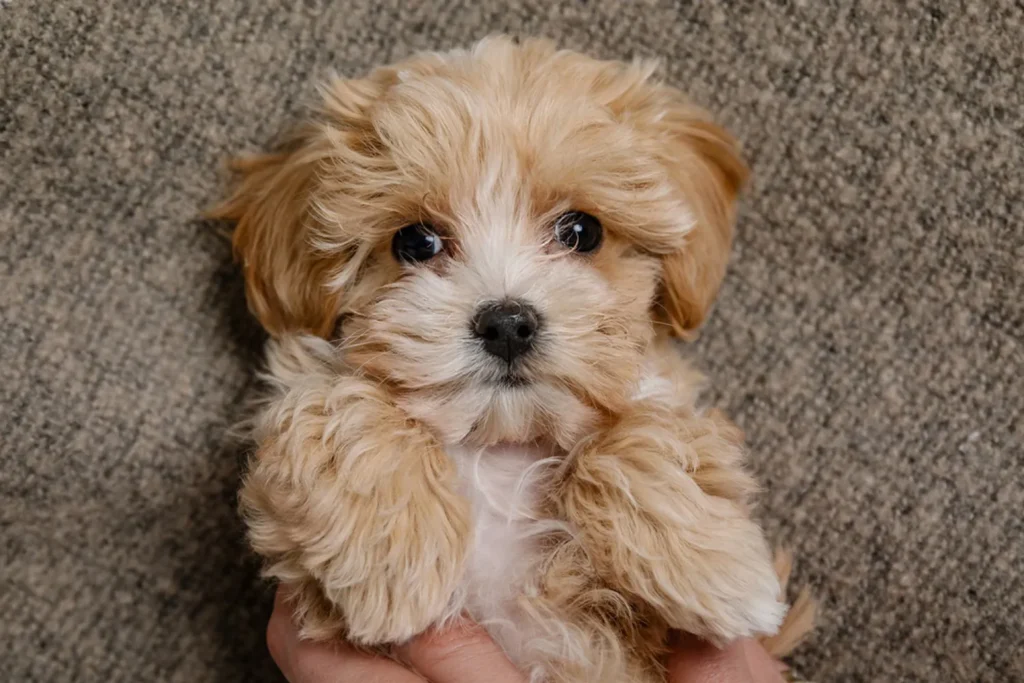
The Maltipoo is a delightful mix of two beloved breeds the Maltese and the Poodle and it really shows. With their teddy bear faces, bright eyes, and bouncy little trot, they have a way of making you grin without even trying. I remember puppy sitting a friend’s Maltipoo who learned “sit” in about ten minutes, then promptly curled up in my lap like we’d been best buddies for years. That’s the charm: playful one moment, a snuggly shadow the next.
They’re friendly, fun loving companions who fit well in apartments or busy households, as long as they get your time and attention. Expect bursts of zoomies followed by a serious commitment to cuddling. Their coats are soft and often low shedding, but you’ll want to brush regularly and plan for trims to keep them comfy. Keep training positive and light Maltipoos thrive on praise and treats and sprinkle in puzzle toys to keep that clever Poodle brain engaged. Most of all, don’t be surprised if they become your little shadow; mine used to follow me from room to room like a fluffy supervisor, just to make sure I didn’t forget snack time.
History and Origin of the Maltipoo
The Maltipoo is a sweet blend of Maltese and Poodle, dreamed up with allergy sufferers in mind. They’re part of that group of “hypoallergenic leaning” hybrids that don’t shed much, making life a lot easier for folks who love dogs but sniffle and sneeze their way through a normal cuddle session. No dog is completely allergy free, of course, but I’ve seen firsthand how much difference a Maltipoo can make. A friend of mine who usually can’t be in the same room as most dogs managed a whole afternoon picnic with a Maltipoo in her lap and only needed one tissue victory!
Their story is often tied to the Maltese side of the family, which hails from the island of Malta, and the mix itself was created with a clear purpose: keep shedding low without losing that soft, silky charm. A small breeder I chatted with years ago told me she was aiming for “a friendly, portable companion with a cloud soft coat and minimal shed.” That’s the Maltipoo in a nutshell gentle, people loving, and easy on the lint roller.
Now, while Maltipoos aren’t officially recognized by the American Kennel Club, they’ve got a big fan club. Designer dog enthusiasts have formed their own clubs and registries, sharing pedigrees, grooming tips, and organizing goofy meetups. I once wandered into a local park “Maltipoo mixer” and it was like being surrounded by a flock of happy cotton balls tiny tails wagging, owners swapping stories like proud parents at a school concert.
If you’re considering one because of allergies, here’s a bit of practical advice: meet a specific Maltipoo and spend some real time together before you commit. Bring a blanket and sit for an hour; your nose will tell you what you need to know. Keep in mind that regular brushing, a gentle bath routine, and washing dog beds can make a big difference. I also run a small air purifier near the dog bed at night simple, but it helps.
In the end, the Maltipoo’s origin is all about companionship without the tumbleweeds of hair, and that mission shows in their popularity. Low shed, big heart, and a knack for making people smile it’s no wonder so many allergy prone folks finally get to say, “I have a dog.”
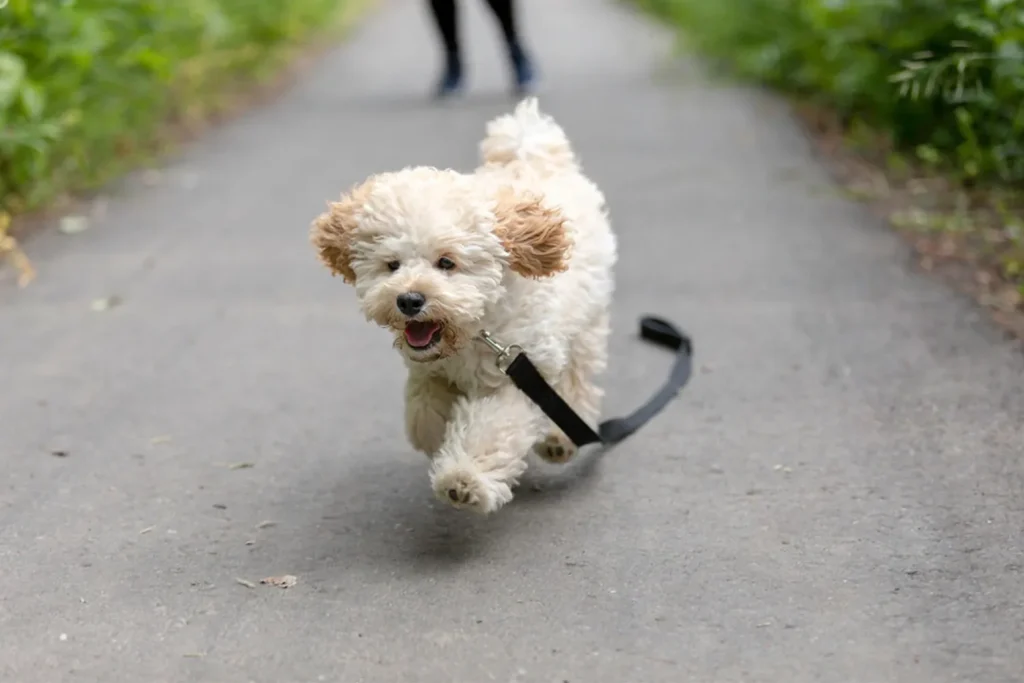
What Is a Maltipoo?
If you’ve ever wished for a cheerful little shadow with a wagging tail, a Maltipoo might be your match. These sweethearts are known for being affectionate, people focused companions who love nothing more than to be right by your side. I remember the first Maltipoo I met, a fluffball named Daisy, who would curl up on my feet while I worked and then pop up ready for a quick game the moment I stood. That’s the Maltipoo vibe: cuddly, friendly, and easygoing especially good for first time dog owners because they’re generally manageable and eager to please.
That said, Maltipoos are true companion dogs, which means long stretches alone aren’t their thing. If you work away from home all day, plan for a dog sitter, a trusted neighbor, or doggy daycare a couple of times a week. When I puppy sat my friend’s Maltipoo, we practiced short “alone time” sessions with a stuffed Kong and a calming playlist; it made a huge difference. They thrive on routine, short daily walks, and little bursts of play or training throughout the day. Think 20-30 minutes of exercise plus some brain games, and you’ll have a happy pup.
Appearance wise, Maltipoos tend to keep that forever puppy look soft eyes and a teddy bear face with coats that can be curly or adorably scruffy. You’ll see a variety of coat colors, though many Maltipoos wear shades of white or cream. A quick brush a few times a week keeps tangles at bay, and a tidy trim every month or two keeps them comfortable. I like to add a gentle face wipe after meals; it helps keep those light coats looking fresh.
As for breeding, Maltipoos can be first generation (a Maltese crossed with a Poodle) or second generation (two Maltipoos bred together). Because of that, individual pups can vary a bit in looks and temperament, which is part of their charm. My advice: meet the parents if you can, and spend time with the litter to find the personality that clicks with your home snuggler, adventurer, or a little of both.
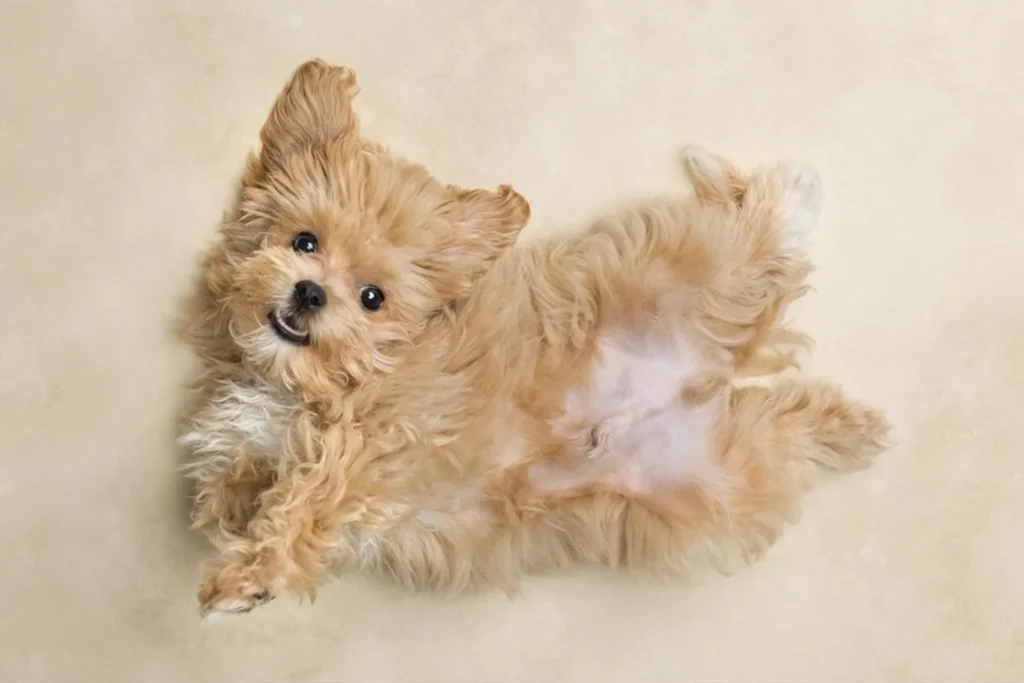
Who Is a Maltipoo Best For?
If you’ve ever met a Maltipoo, you know they’re little clouds of cuddles with just enough pep to keep life interesting. I first fell for the breed when a friend’s Maltipoo curled up on my lap during a movie night and then, ten minutes later, was zooming around the coffee table with a squeaky toy. They’re a wonderful match for people who spend a lot of time at home and want a companion that’s affectionate, people focused, and happy to hang out between play sessions.
Allergy prone folks often find Maltipoos to be a breath of fresh air, and many do well with them. Still, I always suggest meeting one in person before bringing a puppy home spending an afternoon together can tell you a lot. Families with kids usually do great with this breed, too. They’re gentle and patient, but like with any small dog, teach children how to handle them respectfully. Indoorsy households suit Maltipoos perfectly, especially if you balance couch time with daily activity. A couple of short walks and a lively game of fetch down the hallway or in a small yard will keep them content. I used to set up a five minute “toy dash” after dinner worked wonders for burning off energy.
Apartment living is no problem for these pups as long as they get a daily run around and some brain games. They’re smart and eager to please, so training tends to click quickly. Puppy classes, a few well timed treats, and a cheerful tone go a long way. They can be a great choice for first time dog owners because they respond well to routine and clear, gentle guidance. Keep a brush handy, offer puzzle toys for mental stimulation, and you’ll have a happy little sidekick who fits right into everyday life.
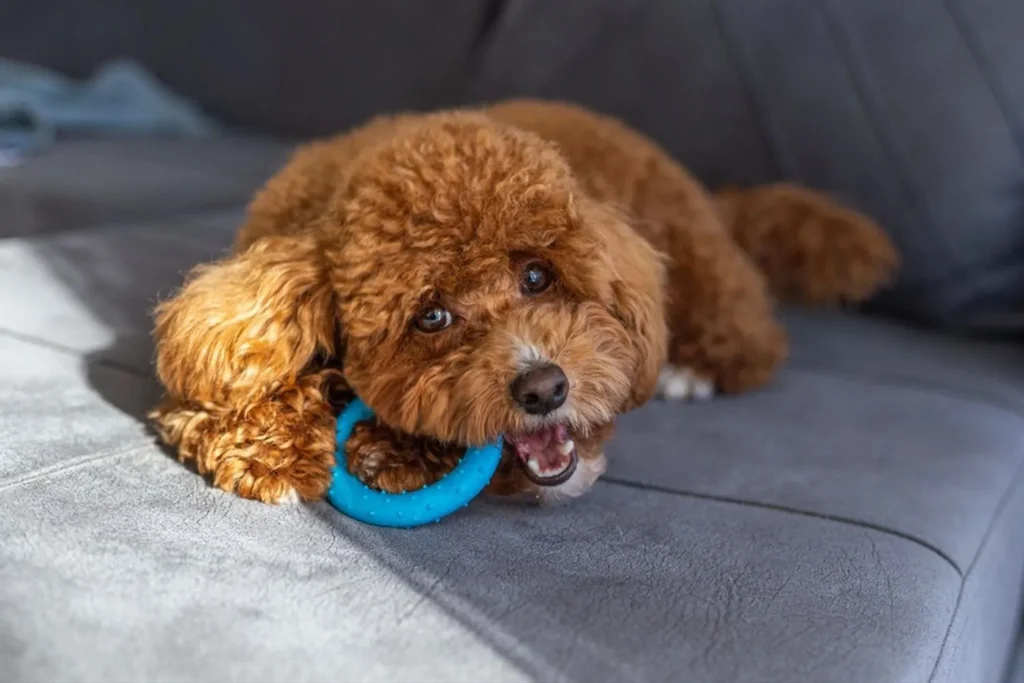
Maltipoo Grooming and Shedding
Maltipoos are widely regarded as hypoallergenic, so you can expect very minimal shedding. Their coats are medium to long and can be anything from soft waves to tight little curls. I once dog sat a Maltipoo named Pepper who dried into perfect ringlets after a bath, while my neighbor’s Maltipoo, Daisy, had a silky, beachy wave. Both left almost nothing on the couch, but their coats did need a bit of regular upkeep to stay tangle free.
Start daily brushing as soon as your Maltipoo is a puppy, even if it’s just a few gentle minutes. It teaches them that the brush is a friend, not a chew toy. I like a small slicker brush followed by a metal comb, especially in “friction zones” like behind the ears, under the collar, armpits, and around the tail. I learned the hard way that skipping even a couple days can turn tiny tangles into surprise mats behind the ears. A spritz of dog safe detangling spray can make the process smoother, and a few treats never hurt.
Haircuts can be done once or twice a year, with more frequent trims if you prefer a shorter, neater look. A tidy “puppy cut” is great for warm months, while a slightly longer coat feels cozy in winter. Between full clips, I ask the groomer for quick clean ups around the eyes, paws, and sanitary area to keep things comfortable and easy to maintain. Keeping the hair around the eyes short also helps with tear staining, which is common in lighter colored Maltipoos.
Plan on a bath about once a month to keep the coat clean and soft. Brush thoroughly before bathing so you’re not washing tangles into tighter knots, and rinse well so no shampoo lingers. Dry the coat completely and brush as you go to prevent post bath mats. Check the ears weekly and keep them clean and dry use a vet recommended ear cleaner and cotton pads, and avoid poking deep. If you notice redness, odor, or a lot of discharge, call your vet.
Don’t forget the little things: brush their teeth two to three times a week (daily is even better) with dog safe toothpaste, and offer dental chews as a bonus. Trim nails as needed if you hear clicking on the floor, it’s time. A nail grinder can be less intimidating if clippers make you nervous. I also wipe under the eyes each morning to keep stains at bay and trim any fluff between the paw pads so it doesn’t collect debris. A gentle, consistent routine turns grooming into spa time; a groomer friend in California taught me to set my dog on the same mat every time, and now, the moment I roll it out, he settles like he’s checking into a tiny day spa.
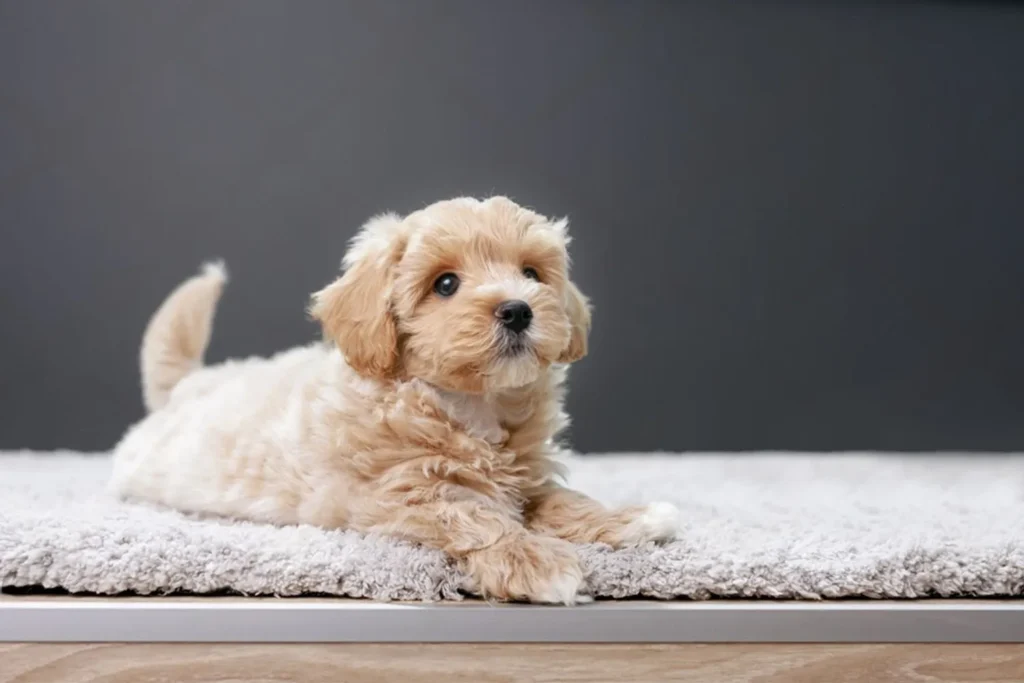
Do Maltipoos Bark a Lot?
Short answer: yes, many Maltipoos have a lot to say. That chatty streak is part of their charm and also why they make such sharp little watchdogs. They’re alert, tuned in, and ready to report any “breaking news” from the front window whether it’s the mail carrier or a leaf bravely skittering across the porch. My friend’s Maltipoo used to announce the oven preheat beep like it was a five alarm fire, then trot off proudly as if he’d saved the day.
If you prefer a very quiet home or live somewhere with thin walls and sensitive neighbors, a Maltipoo puppy might not be the best fit. But if you love their spark and want to manage the noise, there are ways to help. Plenty of exercise and brain work (think snuffle mats, puzzle toys, and training games) can take the edge off “I’m bored” barking. I taught a simple “thank you” cue praise the first alert bark, then calmly ask for quiet and reward the silence. It doesn’t make them mute, but it shortens the concerts. Desensitizing common triggers helps too: play a doorbell sound at low volume while feeding treats, gradually turning it up over time. Blocking window views, adding white noise, and keeping a steady routine can also reduce those “I must report this!” moments.
Bottom line: Maltipoos are little alarms with big hearts. If you can channel their alertness, celebrate a couple of warning woofs, and then guide them back to calm, you’ll get the watchdog benefits without feeling like you live next to a barking contest. And on days when the commentary runs long, a long walk and a chewy toy work wonders.

Average Maltipoo Height and Weight
Maltipoo sizes can swing a bit, and it mostly comes down to the Poodle parent. A Toy Poodle mix tends to stay on the smaller, feather light side, while a Miniature Poodle mix gives you a slightly sturdier, taller fluffball. In general, you’re looking at about 20-35 cm tall at the shoulder and roughly 2-9 kg in weight (think 8-14 inches and 4-20 pounds). That’s a big range for such a small dog, which is part of their charm.
I’ve met teeny Maltipoos who could nap in a bike basket and others with the springy stride of a little athlete. My friend’s pup, Pip, is a Toy Poodle mix and hovers around 22 cm and 3 kg adorable and zippy. Another neighbor’s Maltipoo, Daisy, comes from a Miniature Poodle and sits closer to 34 cm and 8 kg, with a bouncy trot that turns heads at the park.
If you’re trying to guess where a puppy will land, ask about the Poodle parent (Toy or Mini) and peek at the parents’ sizes. Most Maltipoos reach their adult height by around 8-10 months and fill out by about a year. To measure, stand your dog on a flat surface and measure from the floor to the top of the shoulder blades. For healthy weight, you should feel ribs without pressing hard and see a slight waist from above. I like to weigh small dogs on a baby scale at home between vet visits handy for adjusting food and picking the right harness size. And if someone mentions “teacup,” just know that very tiny dogs can need extra care; steady growth and good nutrition matter more than chasing the smallest possible size.
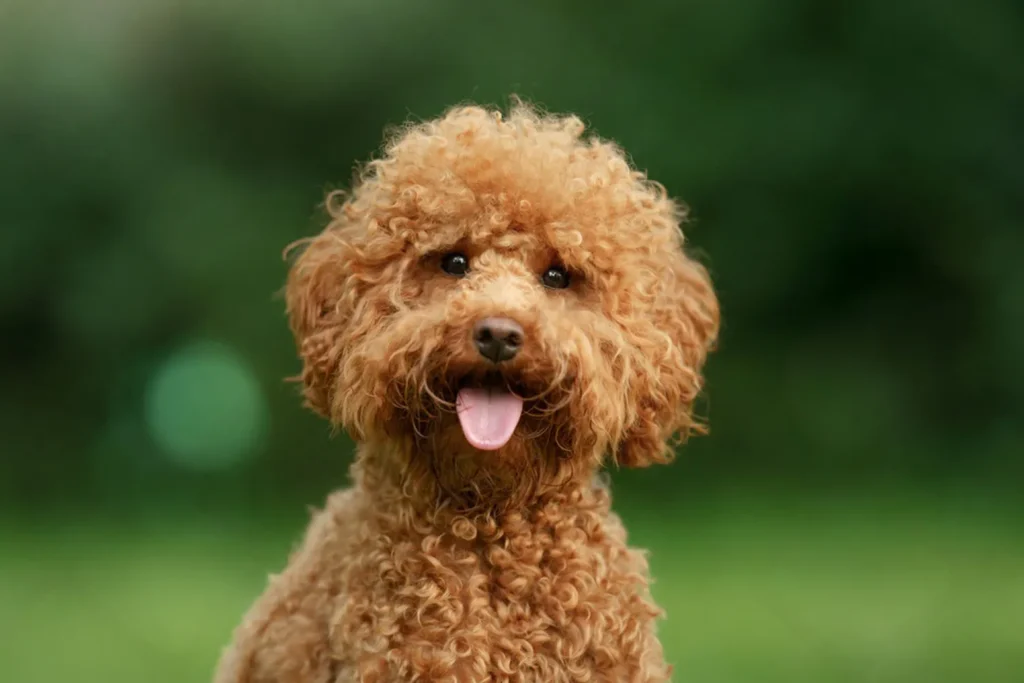
Are Maltipoos easy to train?
With those bright Poodle smarts and the Maltese eagerness to please, Maltipoos tend to catch on fast. They’re a great pick for first time owners because they usually enjoy learning and love the praise that comes with it. I taught my friend’s Maltipoo, Biscuit, to sit in one afternoon though “down” took a few more days and a lot of belly rubs. That’s the thing: they’re quick studies, but they’re still puppies, and not every cue will stick right away.
A little structure goes a long way. Keep sessions short and upbeat five to ten minutes, a few times a day is perfect. Use tiny treats, clear cues, and a cheerful voice; harsh corrections just make these sensitive fluffballs shut down. Start early with the basics like sit, stay, come, and gentle leash walking, and be consistent about house rules (couch or no couch pick one and stick to it). I like to end each session on an easy win so they finish confident and excited for next time. Socialization is just as important: introduce new people, sounds, and calm dogs while they’re young so they learn what’s normal and what’s not.
Bottom line: Maltipoos are very trainable, but patience and consistency are your best friends. Start early, keep it fun, and you’ll be amazed at how quickly they bloom.
How Do Maltipoos Behave? A Look at Their Temperament and Personality
If you’re after a pocket sized shadow who adores being by your side, a well bred Maltipoo fits the bill. They’re bright, affectionate little dogs with gentle manners and a big capacity for love. Mine would do zoomies around the coffee table and then curl into a tight donut on my lap like it was her life’s mission. They bond closely with their people and make wonderful companions for anyone who wants a loyal, cuddly sidekick.
Early socialization is key to bringing out that confident, playful spark. I like to introduce puppies to friendly dogs, new people in hats and sunglasses, the clatter of coffee cups, and short car rides tiny adventures that build a steady, happy temperament. Because they’re smart, Maltipoos thrive on short, upbeat training sessions and puzzle toys. A little daily structure goes a long way. They can be “Velcro dogs,” so I practice alone time training from day one to head off clinginess.
Maltipoos are alert, often with a surprisingly feisty streak for their size. Think of them as enthusiastic alarm clocks: the doorbell, the mail slot, even a squirrel blinking at the window gets a full report. That’s handy if you like an early heads up, but it’s worth teaching a “quiet” cue and rewarding calm. A couple of brisk walks, some indoor play, and mental games usually take the edge off the barkiness. With their gentle nature, they’re lovely with respectful kids and other pets just supervise and remind everyone that small dogs need careful handling. In the right home, they’re every bit the cheerful, devoted companion they’re known to be.
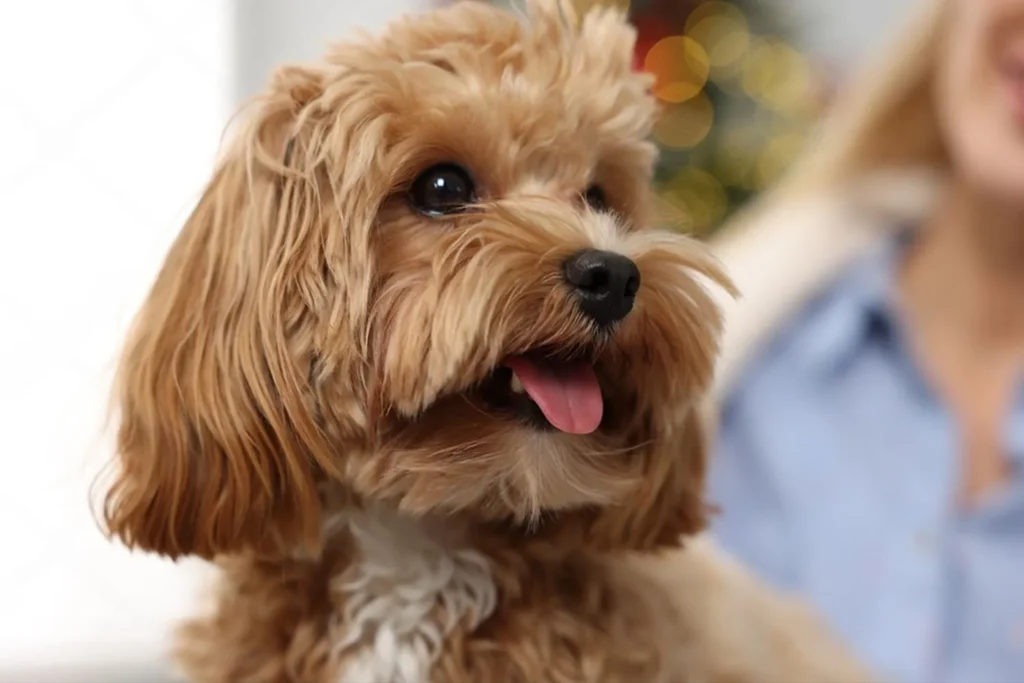
Do Maltipoos Have Common Health Issues?
Even when you get your Maltipoo from a wonderful, reputable breeder, it’s good to remember they’re still living, wiggly little beings adorable, yes, but not invincible. I always tell new owners to learn the basics of what to watch for and to trust their gut. If something feels off, a quick call to your vet beats a night of worry every time. Regular checkups, keeping a simple health journal, and having a plan for emergencies can make a world of difference.
Epilepsy is one thing you might hear about with Maltipoos. It causes seizures, and while there isn’t a cure, many dogs do very well on medication. The first time I saw a friend’s Maltipoo have a seizure, it was scary there was stiffening, a little paddling, some drooling but timing the episode, moving furniture out of the way, and staying calm helped a lot. If it ever happens, jot down how long it lasts and, if you can, take a short video to show your vet. With the right treatment plan, most pups go back to being their cheerful, tail wagging selves.
White Shaker Syndrome can also show up in small, light coated dogs like Maltipoos. It looks like full body tremors, wobbly coordination, and quick eye movements, and it often pops up between six months and three years of age. Stress or excitement can trigger it. I remember a client’s little guy who would start trembling after big, noisy greetings at the door once they dialed down the chaos and built a calmer routine, episodes were less frequent. Your vet can guide you on managing it, and many dogs respond well when stress is kept in check.
Another condition seen in toy breeds is Legg Calve Perthes disease, where the blood supply to the head of the femur is compromised and the bone begins to break down over time. Early hints include a limp, “bunny hopping,” reluctance to jump on the couch, or yelping when you touch the hip. If you notice any of that, get an exam and X rays sooner rather than later. Treatment varies, and while the word “hip” sounds daunting, I’ve known small dogs who bounced back beautifully with the right care. In the meantime, keep them lean, use a harness instead of a collar, add ramps or steps, and stick to gentle, controlled exercise.
Bottom line: none of these possibilities mean your Maltipoo won’t live a happy, long life. Health testing from good breeders helps, but staying observant, keeping your vet looped in, and creating a calm, safe routine are your best tools. And don’t forget most days with a Maltipoo are all about cuddles, goofy zoomies, and that “I adore you” look that makes every extra bit of care worth it.
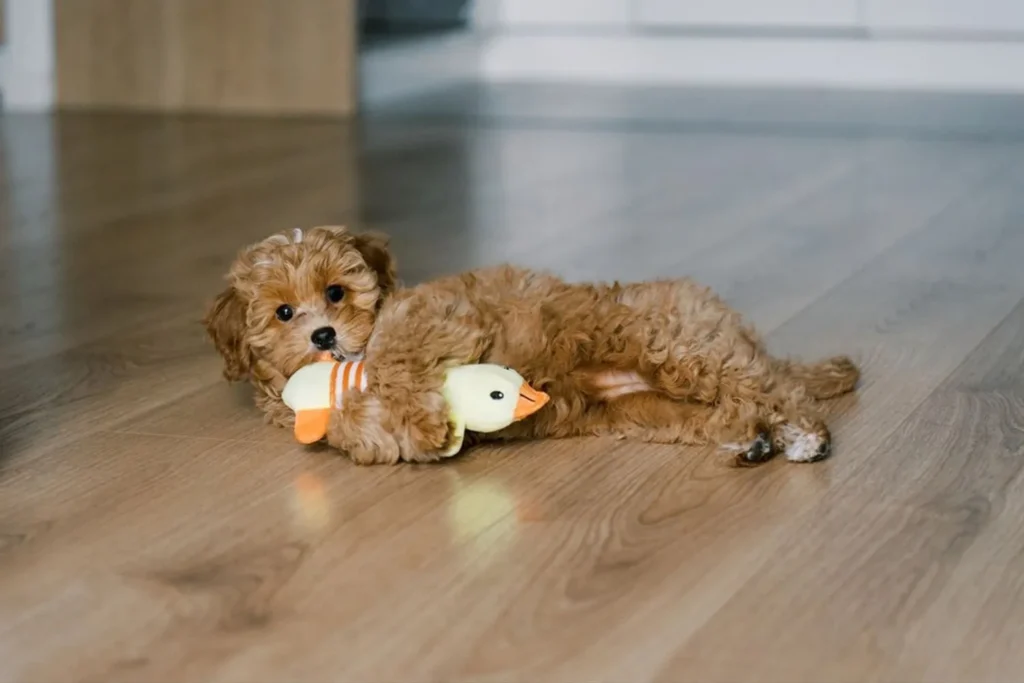
What Is the Lifespan of a Maltipoo?
Most Maltipoos settle into a nice long life with their families, typically around 10-15 years. Like many small breeds, they can come with a few health quirks, but with good care they’re usually cheerful little companions well into their teens. My neighbor’s Maltipoo, Daisy, still does her bouncy “welcome wiggle” at 13, and it’s a reminder that the day to day choices we make for them really add up.
Quality of life is the big difference maker. A balanced, high-quality diet and keeping them at a healthy weight will do more than any fancy supplement. I measure meals and skip table scraps those puppy eyes are powerful, but a trim waistline keeps joints and heart happier. Daily exercise matters too: a couple of short walks, some backyard zoomies, and a bit of fetch or tug are perfect for burning energy without overdoing it.
Regular vet checkups and dental care are huge for small dogs. I brush teeth a few times a week and schedule cleanings as needed; it’s not glamorous, but it pays off. Gentle grooming, puzzle toys to keep their minds busy, and a safe home setup like pet steps for the couch to protect little knees also help. With steady routines and plenty of love, your Maltipoo has a great chance of enjoying that full 10-15-year stretch by your side.
How Much Should a Maltipoo Eat?
As a small breed, a Maltipoo doesn’t need big, heaping bowls to stay happy and healthy. A good starting point for most adults is about 1.5 cups of food per day, split into two meals morning and evening. I like this rhythm because it keeps their energy steady and helps prevent that “gobble then nap” slump. Think of 1.5 cups as your baseline, and tweak a little up or down depending on your dog’s size, age, and how much zooming they do on walks.
With my friend’s Maltipoo, Benny, we learned that measuring matters. A real measuring cup (not a coffee mug) kept his portions consistent, and we cut back a smidge on days when his training treats added up. On rainy, lazy days, we held steady. On busy park days, he sometimes needed a touch more to keep his ribs from showing. I also like using a slow feed bowl or a puzzle feeder Maltipoos can be enthusiastic eaters, and it turns dinner into a fun little brain game.
Choose a high-quality small breed formula that covers the essentials: good protein for muscles, healthy fats (including omega-3s) for coat and skin, and enough fiber for tummy health. Puppies do best with a growth formula rich in DHA for brain development, while seniors may benefit from joint support. Keep in mind, not all foods have the same calories per cup one brand’s 1.5 cups can be another’s 1 cup so check the bag and your dog’s body condition. If you switch foods, do it slowly over a week to avoid tummy upsets. A splash of warm water or a spoon of wet food can help picky eaters; a vet once taught me to microwave kibble for a few seconds to boost the aroma, and it worked like a charm.
Treats are fine in moderation, but try to keep them under 10% of daily calories. Fresh water should always be available. And of course, steer clear of the big no nos like grapes, raisins, chocolate, xylitol (in sugar free gum), onions, garlic, and cooked bones. If you’re ever unsure about portions or ingredients especially if your Maltipoo has allergies, weight changes, or a sensitive stomach have a quick chat with your vet. They can tailor the plan so your little fluff stays bright eyed, bouncy, and perfectly fueled.

Maltipoo FAQs
Can a Maltipoo swim?
Most Maltipoos can swim, and plenty of them enjoy it especially the ones who pick up that water loving streak from the Poodle side. The Maltese side, on the other hand, isn’t known for being strong in the water, so your pup’s enthusiasm may vary. I’ve had one Maltipoo who cannonballed into every lake we found and another who would only tiptoe along the edge like the water was lava. If you do take yours swimming, start shallow, keep sessions short, and pop on a snug life jacket the first few times. I always rinse mine off afterward and dry the ears well keeps skin happy and avoids those pesky ear issues.
Do all Maltipoo dogs turn white?
Not at all. Maltipoo coats can go darker or lighter over time depending on genetics. Some do mellow into a creamy white as they mature, while others keep or even deepen their original shade. I remember thinking my apricot pup would stay the same color forever by his second birthday he’d lightened to a warm champagne, while his brother darkened around the ears. Don’t be surprised if your puppy picture and adult portrait look a little different. It’s part of the charm.
Are black Maltipoo dogs rare?
A truly black Maltipoo puppy is hard to find, so you probably won’t see one just waiting at a pet shop. Since the Maltese side doesn’t offer black, that color typically comes from the Poodle parent, which makes it less common. If you’ve got your heart set on black, be ready to join a waitlist and ask plenty of questions about the parents. One of my friends waited months for her little inky nugget and it was worth it. Just remember, some black coats may soften to charcoal as they grow, which can be gorgeous in its own right.
Is a Maltipoo a hypoallergenic dog?
Maltipoos come fairly close to being completely hypoallergenic for many families. They tend to produce less dander and shed minimally, which can be a big relief for allergy prone households. I always suggest meeting a Maltipoo in person before committing if allergies are a concern bring tissues, spend an hour cuddling, and see how you feel. Regular brushing, professional grooming, and a clean home routine (I swear by a HEPA filter) help keep sniffles at bay.
Do Maltipoos like to be held?
Yes most Maltipoos adore being held and make excellent lapdogs. Mine will burrow under my arm like a little marshmallow and snooze through a movie. But don’t be fooled by their size; they can pivot from cuddle puddle to zoomies in three seconds flat. Support their chest and hindquarters when you pick them up, and watch for signs they need a break (a little squirm or a head turn says “all done”). A cozy bed nearby and a calm “settle” cue have saved my coffee more than once when the energy switch flips back on.
https://www.google.com/books/edition/Morkies_Morkie_Puppies_and_the_Morkie/SBM9DgAAQBAJ?hl=en&gbpv=0
Disclaimer:
This article is for informational purposes only and doesn’t replace professional veterinary or training advice. Always consult a certified vet or dog trainer for guidance specific to your pup.

